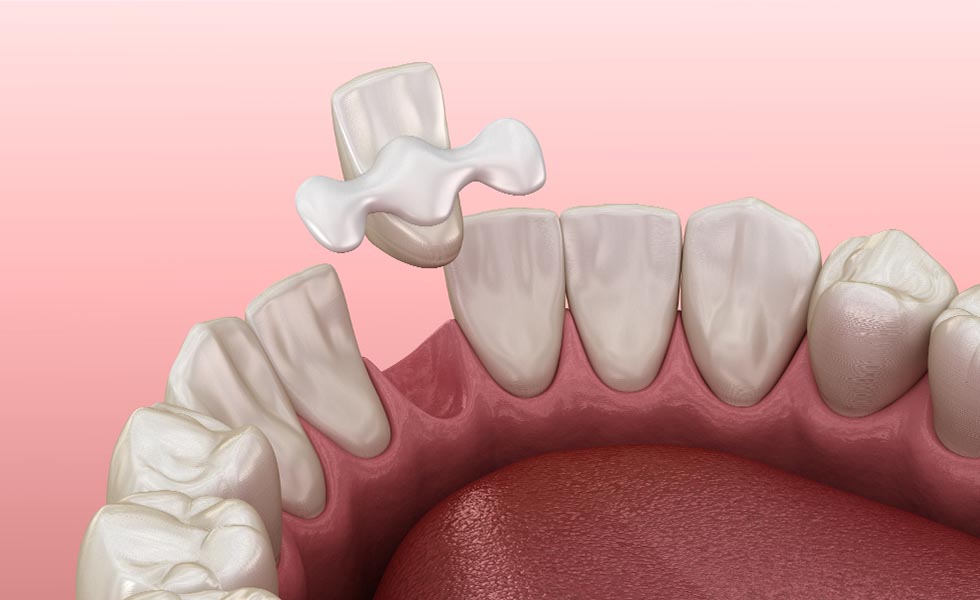Physical Address
304 North Cardinal St.
Dorchester Center, MA 02124
Physical Address
304 North Cardinal St.
Dorchester Center, MA 02124

Missing teeth can significantly impact your confidence, oral health, and overall quality of life. Fortunately, dental advancements offer various options to restore your smile efficiently and effectively. Among these options, the Maryland Bridge has gained popularity due to its minimally invasive nature and aesthetic appeal. Whether you’re considering this solution for a front tooth or exploring your restorative choices, understanding what a Maryland Bridge is, how it functions, and its advantages can help you make an informed decision. In this comprehensive guide, we’ll explore every aspect of the Maryland Bridge, including its types, procedure, benefits, limitations, and how it compares to other dental restorations.
A Maryland Bridge is a type of dental restoration designed to replace a missing tooth with a conservative and aesthetically pleasing option. Unlike traditional bridges that require extensive alteration of adjacent teeth, the Maryland Bridge uses a different bonding technique that preserves more of your natural tooth structure.
The mechanism of a Maryland Bridge relies on adhesive bonding rather than mechanical attachments like clasps or pins. Once the framework is custom-made to fit your mouth, it is cemented onto the back of the adjacent teeth, preserving your natural dentition. This method provides a quick and minimally invasive pathway to restore the appearance and function of missing teeth, especially suitable for replacing missing front teeth.
This classic form involves a metal or porcelain framework with wings bonded on each side to the back of neighboring teeth. It is primarily used for front tooth replacements due to its aesthetic properties and minimal invasiveness.
This combination combines features of the Maryland bridge with resin-bonded components, making it suitable for more substantial restorations or cases where additional strength is needed. It can be used for partial restorations or in cases with slightly more complex dental loss.
While Maryland Bridges excel in replacing single missing teeth, especially anterior teeth, they are less suitable for extensive dental gaps or full-mouth restoration. For multiple missing teeth, options like dental implants or traditional bridges may offer better durability.
One of the significant advantages of a Maryland Bridge is that it requires little to no removal of healthy tooth structure. This preservation of natural enamel helps maintain the integrity of your teeth for future restorations.
The materials used in Maryland Bridges mimic natural teeth closely, making the results appear seamless and natural. Metal-free options like ceramic are available for patients prioritizing aesthetics.
Compared to implants or traditional bridges, Maryland Bridges tend to be more affordable, making them an attractive option for many patients seeking conservative restoration.
Typically, the entire process from consultation to placement can be completed within a few visits, providing faster results and quicker restoration of your smile.
On average, a Maryland Bridge lasts between 5 to 10 years. While durable, it is more prone to chipping, debonding, or failure over time compared to implants. Proper care and avoidance of excessive force can extend its lifespan.
Ideal candidates are those with healthy adjacent teeth and a single missing front tooth. They are less suitable for patients with large gaps, multiple missing teeth, or extensive bite issues.
Although less invasive, improper bonding or poor oral hygiene can lead to damage or compromise of bonding on neighboring teeth, emphasizing the importance of regular dental check-ups.
Initial assessment includes a comprehensive dental examination, X-rays, and impressions to determine if a Maryland Bridge is suitable for you.
Minimal tooth preparation is needed. The dentist gently removes a small amount of enamel from the backside of neighboring teeth to create a surface for bonding. Custom bridges are then fabricated in a dental lab.
Once ready, the Maryland Bridge is bonded onto the prepared teeth using high-quality cement. The dentist makes necessary adjustments to ensure proper fit and bite alignment.
Good oral hygiene, avoiding hard biting forces, and regular dental visits are essential to maintain the longevity of your Maryland Bridge. The dentist will provide specific instructions tailored to your needs.
Require more extensive preparation of adjacent teeth, generally offering greater durability but at a higher cost and invasiveness.
Involve surgical placement into the jawbone, offering a long-lasting and natural-feeling solution. Implants tend to be more expensive and invasive but can last a lifetime.
Are affordable and easy to adjust but less stable and comfortable than fixed options like Maryland Bridges or implants.
The cost of a Maryland Bridge varies depending on materials, complexity, and geographic location, typically ranging from $1,000 to $2,500 per unit. Many dental insurance plans cover a portion of the expense, especially if deemed medically necessary. It’s advisable to consult with your provider to understand coverage options.
The Maryland Bridge offers a conservative, aesthetic, and cost-effective solution for replacing a missing front tooth, especially suitable for patients seeking minimal invasiveness. However, it may not be the best choice for everyone. Consulting with a qualified dental professional will determine if this restoration aligns with your dental needs and long-term goals.
| Feature | Details |
|---|---|
| Ideal For | Single missing front tooth |
| Procedure Time | Typically 1-2 visits |
| Longevity | 5-10 years |
| Cost Range | $1,000 – $2,500 per unit |
| Best For | Patients seeking conservative, quick restoration |
Choosing the right dental restoration depends on your individual needs, budget, and oral health. For personalized advice, consult with a dentist experienced in American Dental Association guidelines or visit a trusted dental clinic to discuss whether a Maryland Bridge is the best option for your smile restoration journey.